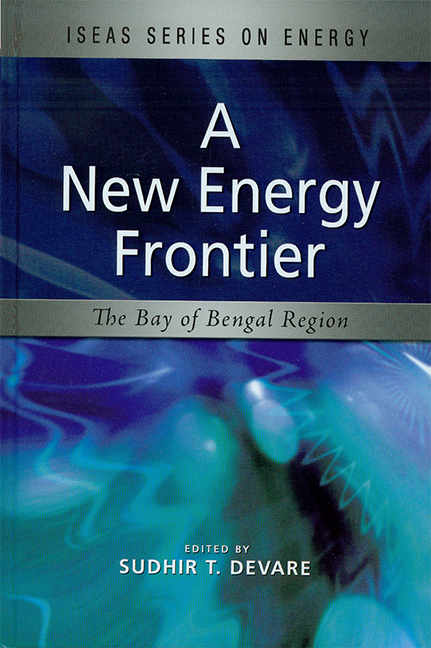Book contents
- Frontmatter
- Content
- Foreword
- Message from the Director
- Preface
- The Contributors
- 1 An Overview of the Energy Scene in the Bay of Bengal Region
- 2 Current and Expected Energy Production and Consumption within the Bay of Bengal Region: A Synopsis
- 3 Gas Potential at the Bay of Bengal and Implications for India's Energy Security
- 4 Macroeconomic Challenges for the Growth of the Energy Sector in Bangladesh in the Context of Regional Integration
- 5 Energy in the Bay of Bengal Region: Myanmar's Perspective
- 6 Marine-related Energy Resources in the Eastern Indian Ocean: Indonesian Perspective
- 7 Energy Trading and Singapore's Role as a Hub
- 8 Bay of Bengal: Awakening of a Potential Giant Area
- 9 Energy Transportation Security in the Bay of Bengal
- 10 Ethical Business Practice or Camouflage? Energy and Mining Companies and Corporate Social Responsibility
- 11 Sustainable and Renewable Energy: Scenarios for the Future
- Index
5 - Energy in the Bay of Bengal Region: Myanmar's Perspective
Published online by Cambridge University Press: 21 October 2015
- Frontmatter
- Content
- Foreword
- Message from the Director
- Preface
- The Contributors
- 1 An Overview of the Energy Scene in the Bay of Bengal Region
- 2 Current and Expected Energy Production and Consumption within the Bay of Bengal Region: A Synopsis
- 3 Gas Potential at the Bay of Bengal and Implications for India's Energy Security
- 4 Macroeconomic Challenges for the Growth of the Energy Sector in Bangladesh in the Context of Regional Integration
- 5 Energy in the Bay of Bengal Region: Myanmar's Perspective
- 6 Marine-related Energy Resources in the Eastern Indian Ocean: Indonesian Perspective
- 7 Energy Trading and Singapore's Role as a Hub
- 8 Bay of Bengal: Awakening of a Potential Giant Area
- 9 Energy Transportation Security in the Bay of Bengal
- 10 Ethical Business Practice or Camouflage? Energy and Mining Companies and Corporate Social Responsibility
- 11 Sustainable and Renewable Energy: Scenarios for the Future
- Index
Summary
The regional group in the Bay of Bengal known as BIMSTEC initially selected nine major areas, for example, trade, investment and industry, technology, transport and communication, energy, tourism, agriculture, fisheries and human resources development for sub-regional cooperation. However at the Second Ministerial Meeting of BIMSTEC in Dhaka in 1998, six priority areas were identified. The energy sector was among the six areas, and as a result of the developments that took place, Myanmar was designated the lead country and the chair country for the energy sector. Two projects are identified for cooperation.
The projects are:
The Energy Infrastructure Development (natural gas) Project, and
The Development of New and Renewable Sources of Energy Project
Following this identification, Thailand and India were designated coordinating countries respectively for the two projects.
Overview of the Energy Situation in the Sub-region/Bay of Bengal
The BIMSTEC region has a very large population; over 21 per cent of the total world population live in this region. The region has a very low per capita energy consumption with the main energy source provided for by traditional sources such as wood fuel and agriculture wastes. The sub-region — Bay of Bengal — has good prospects for economic growth and industrial expansion. However, it is currently experiencing high population growth and urbanization, increasing substitution of traditional fuels by commercial fuels and is under heavy stress from high commercial energy demand growth.
Although some of the member countries of the sub-regional group in the Bay of Bengal are endowed with primary energy resources such as coal, oil and natural gas and sharing of resources has already been in progress, the region as a whole is currently a net importer of commercial energy. Supply of electricity for population in most member countries still leaves much to be desired. Moreover, a large part of the population in the member countries live in remote areas where the availability of commercial energy is quite limited even for social purpose, let alone income generation.
Against this energy scenario, there is a dire need for the region to increase its efforts to develop the energy sector to the extent possible.
- Type
- Chapter
- Information
- A New Energy FrontierThe Bay of Bengal Region, pp. 90 - 111Publisher: ISEAS–Yusof Ishak InstitutePrint publication year: 2008



